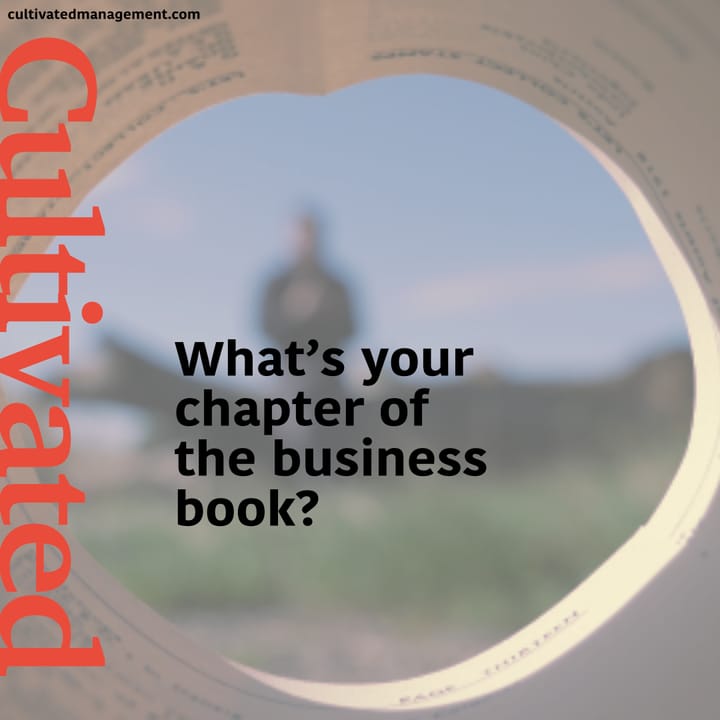3 Ways to talk about value - Podcast
In this episode I capture sounds from Zurich and share 3 ways to frame conversations about value.

Hey,
I hope you are doing well. In this episode of the :Here's An Idea Worth Playing With" podcast, I share a 3 step model to consider when communicating requests to executives.
I share a story of failure and success, explain why jargon doesn't sometimes resonate and share an idea worth playing with around how to frame your communication.
I was in Zurich to deliver a Keynote talk about this very subject of value, so thought I'd sneak in an episode and capture some sounds from Zurich.
For a video from Zurich showing me capturing the sound and some footage of this wonderful Swiss city, then check out my Instagram feed.
Here's the episode with an AI generated transcript below (let's see how it deals with the church bells).
And some photos from Zurich!








Transcript
Please note, this was AI generated...
Speaker 1: Hi, everybody. And welcome to another episode of here's an idea worth playing with the Short Sharp podcast with ideas, usually around communication in work. Now, I am here in Zurich today, and I'll explain a little bit about that. But I'm sat by the river. It may be a little bit noisy.
You might hear some trams and some people and some cars and what have you. And, I believe there's gonna be a bit of a bell ringing session at the cathedral in about an hour's time. So I'll hopefully try and capture some of that. I'm in Zurich today because yesterday I delivered a conference talk about value. And we're gonna talk a little bit about what value is, what it means, etcetera.
But I must say Zurich is a very fabulously wonderful European city. I must admit, I'm very much enjoying myself. Got a cup of coffee, sat by the river. There are people out and about, still fairly early. It's 9 o'clock on a Saturday morning.
The city is fabulous. It's brilliant. Beautiful sort of riverside, lots of old buildings, hustle and bustle. You've got sort of a cafe culture. It's just fabulous, you know.
I've tried to get by with a little bit of French and a little bit of German, but actually, they speak, sort of Swiss German, which I didn't really understand. So I've reverted back to English, which is, of course, very stereotypical. So I'm gonna introduce this idea of value. And this is really what the, talk was about, was this essence of value and how to communicate with executives and get executive buy in or management buy in for your ideas, you know. Could be a new product, new way of working, new way of doing something, some sort of improvement to the process that requires a little bit of investment.
You know, whatever it is. And, you know, I tell this story about a, gentleman who I worked with. I was consulting straight after finishing, in the startup after, you know, the sale and what have you. And I was doing some consulting and I was working with a manager of the technical team. And he was so frustrated because he had all of these problems which he'd identified, and they were legit evidence based problems.
And he'd got a series of, solutions to these problems that sounded, you know, realistic in the temp, you know, in the sort of sense that it would solve these problems. But he just could not get executive support for them. So I was brought in to try and help this guy, you know, test his ideas, help him build a road map, all the other good stuff of, you know, really trying to help, see whether this guy was onto something or whether he was, you know, out of his depth. Wonderful chap. Brilliant, massive mustache.
It was a thing of beauty. Must've spent decades grooming this thing. And he was a force to be reckoned with. But when he went into the executive room to present his ideas, he would always talk in technical language, things that made sense to him and his peers and his teams. This was a technical team, so he was talking about continuous pipelines of delivery and, you know, DevOps processes and all these kind of good things that you'd absolutely expect a company to be on a journey to do.
This was, you know, maybe 5 or 6 years ago. And he would just never get by. And you'd look at the executives, and they would just be all asleep. They'd be checking the phones. They just wouldn't be paying attention to him because it meant nothing to them.
It wasn't a language that they understood. And even if they didn't understand it, he made no effort to try and articulate that in a way that helped. So I spent a bit of time with him, a couple of weeks it was, taking his ideas and fine tuning them into the three things that I'm gonna share with you in a minute. And he went in there after 2 weeks, and he presented them in this frame. And it's mostly a financial frame.
We'll we'll talk about that in a minute. And he did, a brilliant talk, as usual. He was a very good presenter. But he weaved everything back into these three ideas that I'd given him. And it was remarkable.
The execs were bought in. They were listening to him. They were, you know, on side with his ideas. I mean, this was, you know, he got what he went in there to get, which was extra funding to recruit people, to buy new technology, to do things in a different way. He'd got air cover, he'd got support, he'd got buy in because he changed the way that he spoke to the executives.
So I'm sat here recording some church bells. I mean, one of the things you'll see in or see you won't see, you'll hear it in this podcast as we go on this journey together, assuming that you stick with me, is this sort of immersive audio that I'm trying to capture and and put into the podcast, partly because I really enjoy it. I love capturing audio. I think there's something sort of really fundamentally human about sound. And the second reason I'm doing it is because I think it just might be a bit of fun in the podcast, so now let me know.
But the third reason is is from a sort of personal perspective, when you sit and you just you just listen, and particularly if you've got an audio recorder, which is what I'm using now, I've got a Zoom H4n Pro for anyone who's interested in the technicalities, you notice things that you wouldn't necessarily notice if you weren't stopping to pay attention. And it's very therapeutic and it's very calming and there's something very human about it. You know, you can hear everything in nature. You can hear, you know, muffled conversations or, you know, glasses being put down in a bar, you know, many a few meters away from where I'm sat. You can you can just sense it or you can hear it.
You can hear the river, you can hear the church bells, you can just hear things. And it brings, like, a real level of awareness that I don't get unless I'm actively sort of meditating or I'm I'm doing this audio recording. So it's a real nice therapeutic part of recording these. This this guy goes in and he comes out, with everything that he wanted. And the reason being is because I'd asked him to think about 3 things, and these are three things that are the core element of this this particular episode.
So when you're speaking to managers or executives and you're trying to get support for something, it helps if you frame it in 1 of 3 ways or ideally all 3 ways or 2 of 3, whatever, but at least one of these. So number 1 is, will this thing that you're seeking support for make us more money? You know, and it doesn't have to make money. We'll cover the other 2 in a minute. But a core part of the conversations around the executive table tend to be around ways to, you know, maximize profit, increase revenue, you know, reduce costs, etcetera.
So number 1 is, will it make us more money? Number 2, I already hinted at here. Will it stop us losing money or reduce costs? You know, this thing that you're gonna do, is is it gonna help us reduce costs? Will it stop us losing money?
And then number 3, will it increase retention or attraction? And and I cover both customers and people in this. So, you know, there are initiatives that you may choose to run because it helps you attract better talent to the business. But it's gonna cost some money. So we need a little bit of money to do this thing.
But we think in the long term, it's gonna increase attraction and maybe reduce the cost of using, recruitment consultants, for example. There are many, many things that you might do to increase the attraction of customers or the retention of them. I worked in one company where, you know, they were losing twice as many customers as they were attaining through the marketing and the sales process. Why was that? Because there was almost zero customer support.
There was almost zero customer experience, and, you know, the product didn't work very well. So a series of things that went on there, there's 5 or 6 initiatives that we ran with that addressed those issues. And so as we were acquiring customers, we were actually now keeping them. And that was a good thing because there's a huge cost to attracting and, and acquiring customers, and there's a huge cost when you lose them, and there's a cost incurred all the way through that life cycle. So understanding that is really key.
So I'm reminded of Edward Deming when I think about these three things. Edward Deming said, if you don't have data or evidence, you're just another person with an opinion. So what we did with this guy, with the mustachioed man, was we sat down and we pulled the data for the various aspects that he was trying to do, like, you know, releasing into production more often, being able to fix issues in live, in a fairly rapid way, which helps with customer attraction and retention. The cultural stuff he was trying to do was trying to aid with attraction of talented staff. So again, you've got all these myriad of things.
And we did what we could in terms of trying to find where the money goes, the flow of money. You know, lifetime cost of a customer. We went and spoke to marketing, sales, finance. We spoke to anybody who had listened to us in order to pull some of those numbers and that data. And once you've got that number of data, you might not actually hit what you say you're gonna do.
You might not, you know, reduce cost by 10%. But hypothetically, when you run it through a sort of an idea or a model like this, you may find that you're in the ballpark. And that's good. And so use evidence and data. Go and speak to people in the business.
Go and gather the numbers and use them to support your message and your request and your ask. Will it make us more money? Will it stop us losing money or reduce costs? And then number 3, will it increase retention or retraction of people or customers? And so that's the kind of basic frame that I like to use.
I mean, not everything is gonna fit in there but, you know, I've not really come across any request that you want from the exec or any support or air cover or buy in or anything that you need from the executive table that doesn't fit into one of those three things. And that Deming quote of going with evidence rather than just an opinion, I see it all the time, you know, managers going to their executive steer codes with opinions on things, you know, often very subjective, often conflicting with other people in the business. There's no evidence. There's no objectivity to it. There's no numbers.
There's no data. So it's really hard at an executive table. Firstly, if you don't understand what's even being presented to you because it's a technical language. But number 2, even if it's simplified into a sort of non jargon language, if it doesn't have the evidence and the data to surround it, it's pretty hard to put your name against that. You know, you might believe in it, you might feel for it, but as an executive, you know what?
You've got to be really careful about how you spend the company's time, energy, attention, and money. And it helps when managers go prepared, when people speak to their managers and are prepared with an idea that they think is gonna solve a problem and a little bit of data to support that. So there were the three things. That's really the premise of the talk that I delivered yesterday. And the Kraftwerk's, sort of co working space, a really beautiful space in Zurich with containers, shipping containers stacked up and used as rooms.
It was remarkable and fabulous, really good, really fun day. And I've got about maybe another 3 or 4 hours until my flight back to the UK. So I'm gonna go and do a bit of a photoshoot. You can find that on Instagram at simplylambert is my handle. And And, of course, if you haven't already, then check out the meeting notes newsletter at cultivateermanagement.com.
You'll also find the comms workshop, which is pretty much what a lot of my work is based on. And you will find other articles and, of course, other podcasts. With that, I'm gonna go enjoy Zurich, it's a beautiful day. Weather's very nice. Gonna grab myself another cup of coffee, go for a walk, take some photos, and maybe record a little bit more audio as well.
I've kinda got over that self conscious moment of walking around with a a Zoom audio recorder with a big, what they call a dead cat on the top, that sort of big fluffy microphone to stop the wind rustling through. I've kinda got past the discomfort of walking around with that and headphones on. Anyway, enough solo waffle. That's me done. And I look forward to speaking to you in the next podcast.
Until then, take care. Bye.



